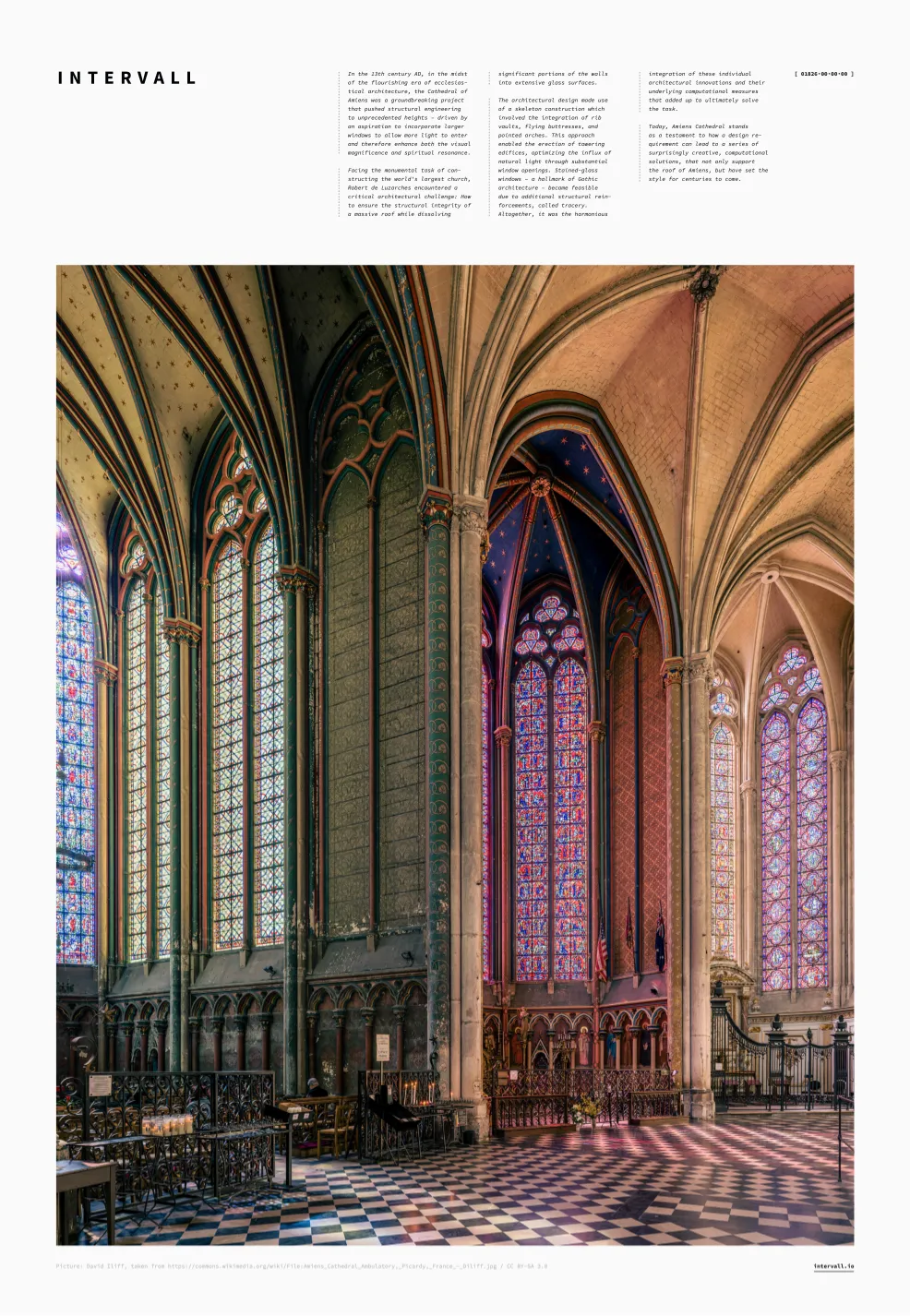[ 0, 1826 ]
In the 13th century AD, in the midst of the flourishing era of ecclesiastical architecture, the Cathedral of Amiens was a groundbreaking project that pushed structural engineering to unprecedented heights – driven by an aspiration to incorporate larger windows to allow more light to enter and therefore enhance both the visual magnificence and spiritual resonance.
Facing the monumental task of constructing the world's largest church, Robert de Luzarches encountered a critical architectural challenge: How to ensure the structural integrity of a massive roof while dissolving significant portions of the walls into extensive glass surfaces.
The architectural design made use of a skeleton construction which involved the integration of rib vaults, flying buttresses, and pointed arches. This approach enabled the erection of towering edifices, optimizing the influx of natural light through substantial window openings. Stained-glass windows – a hallmark of Gothic architecture – became feasible due to additional structural reinforcements, called tracery. Altogether, it was the harmonious integration of these individual architectural innovations and their underlying computational measures that added up to ultimately solve the task.
Today, Amiens Cathedral stands as a testament to how a design requirement can lead to a series of surprisingly creative, computational solutions, that not only support the roof of Amiens, but have set the style for centuries to come.
